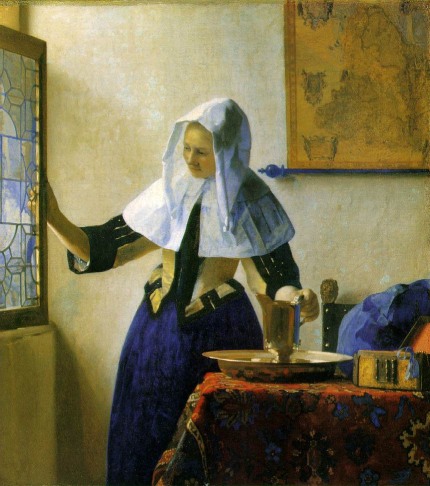GENESIS OF THE BOOK

That a thing made by hand, the work and thought of a single individual, can endure much longer than its maker, through centuries in fact, can survive natural catastrophe, neglect, and even mistreatment, has always filled me with wonder. Sometimes in museums, looking at a humble piece of pottery from ancient Persia or Pompeii, or a finely wrought page from a medieval manuscript toiled over by a nameless monk, or a primitive tool with a carved handle, I am moved to tears. The unknown life of the maker is evanescent in its brevity, but the work of his or her hands and heart remains.
Likewise, Johannes Vermeer is also a lover of the connotations and qualities of things--the strong lines of a gold pitcher, the luminous variations in a window pane, the rough nap of a red Turkish carpet. His combination of these elements surrounding a person caught in a moment of quiet living is the substance of his art.
The territory for this book is The Netherlands, as well as my love for painting and for lives lived in other eras. I bear a Dutch name, and there's a small town in North Holland named Vreeland. More than that I did not have, but I could read, and thus could imagine my way into a heritage and feel some sense of personal origins in the world. Combining these elements, much like a painter designs a composition, resulted in Girl in Hyacinth Blue.